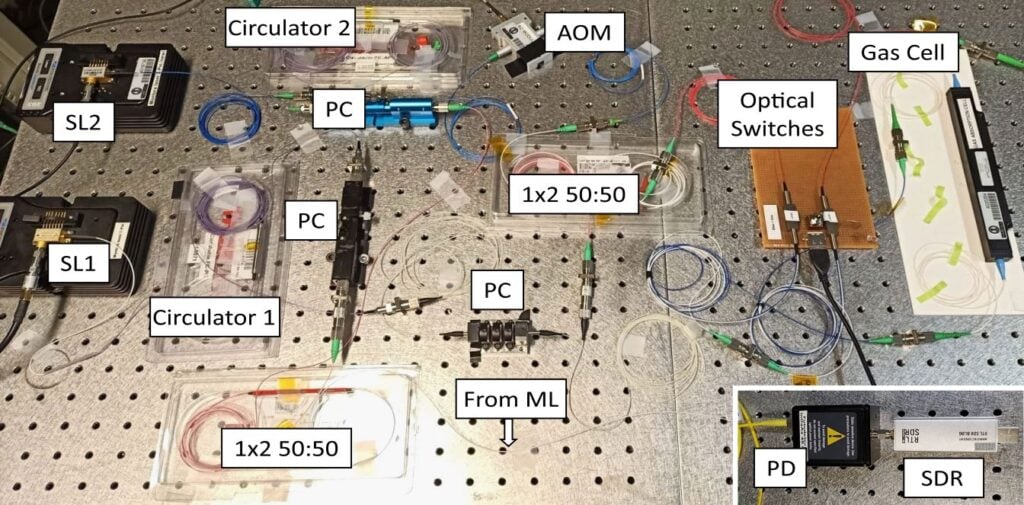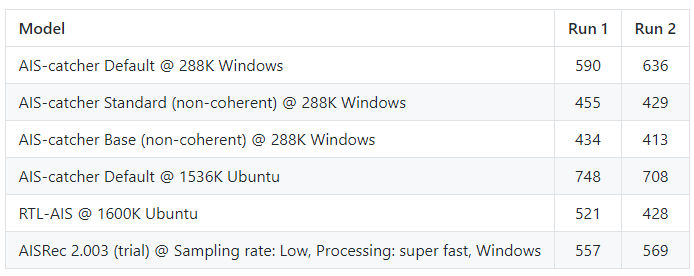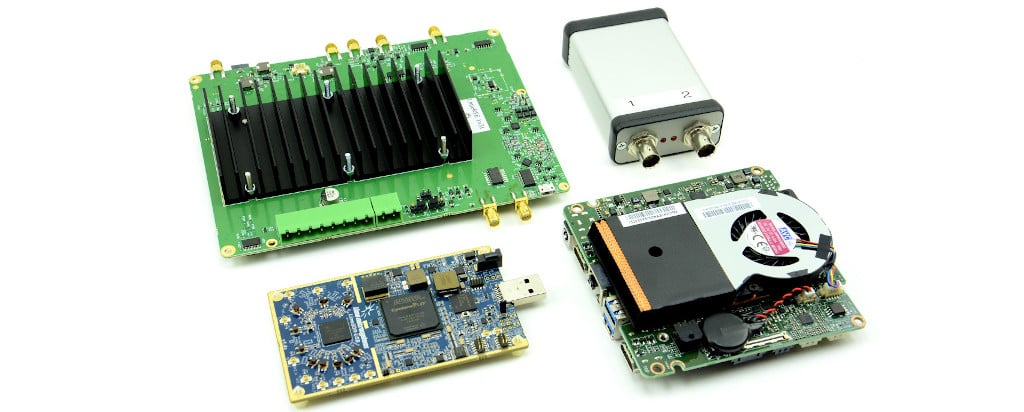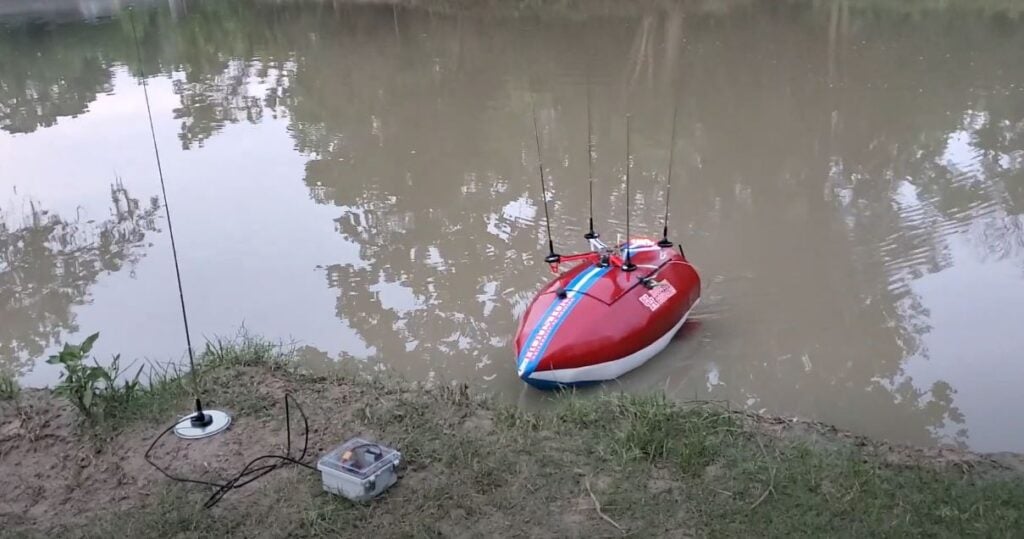Using an RTL-SDR in Dual-Comb Spectroscopy using Diode Lasers
Thank you to Antonio from the Polytechnic University of Madrid, Department of Photonic Technology and Bioengineering for writing in and sharing with us his teams latest research titled "Dual-Comb Spectrometer Based on Gain-Switched Semiconductor Lasers and a Low-Cost Software-Defined Radio". The research involves the use of an RTL-SDR Blog V3 dongle in place of an expensive digital oscilloscope for measuring the output of a dual-comb spectrometer. The abstract of the paper reads as follows:
Dual-comb spectroscopy has become a topic of growing interest in recent years due to the advantages it offers in terms of frequency resolution, accuracy, acquisition speed, and signal-to-noise ratio, with respect to other existing spectroscopic techniques. In addition, its characteristic of mapping the optical frequencies into radio-frequency ranges opens up the possibility of using non-demanding digitizers.
In this paper, we show that a low-cost software defined radio platform can be used as a receiver to obtain such signals accurately using a dual-comb spectrometer based on gain-switched semiconductor lasers.
We compare its performance with that of a real-time digital oscilloscope, finding similar results for both digitizers. We measure an absorption line of a H13C14N cell and obtain that for an integration time of 1 s, the deviation obtained between the experimental data and the Voigt profile fitted to these data is around 0.97% using the low-cost digitizer while it is around 0.84% when using the high-end digitizer.
The use of both technologies, semiconductor lasers and low-cost software defined radio platforms, can pave the way towards the development of cost-efficient dual-comb spectrometers.
The paper can be freely accessed on IEEE Access which is open access.
We note that in the past we've also seen an RTL-SDR used as part of a low cost Ozone spectrometer experiment, and and Airspy used in an optical FM spectroscopy experiment.






